On the 31st of October the night of Halloween arrives. This time is also known in Gaelic as Samhuinn, or Oidhche Shamhuinn, an t-samhuinn, Hallowe’en, Hallowmas, All hallows, All saints eve, All saints, the first night of winter or meal-and-bree night.
In the season leaves should love,
since it gives them leave to move
through the wind, towards the ground
they were watching while they hung,
legend says there is a seam
stitching darkness like a name.
Now when dying grasses veil
earth from the sky in one last pale
wave, as autumn dies to bring
winter back, and then the spring,
we who die ourselves can peel
back another kind of veil
that hangs among us like thick smoke.
Tonight at last I feel it shake.
I feel the nights stretching away
thousands long behind the days,
till they reach the darkness where
all of me is ancestor.
I turn my hand and feel a touch
move with me, and when I brush
my young mind across another,
I have met my mother's mother.
Sure as footsteps in my waiting self,
I find her, and she brings
arms having answers for me,
intimate, a waiting bounty.
"Carry me." She leaves this trail
through a shudder of the veil,
and leaves, like amber where she stays,
a gift for her perpetual gaze.
(Finch, 1996)
There is a difference. All-Hallows was a night when the souls in purgatory were free to roam the earth seeking alms from their relatives and prayers for their souls. The tradition of Soul caking was born. In return for a cake, known as a soul cake, those in receipt of it would pray for the dead of the household. Rhymes such as “a soul, a soul, an apple or two, if you haven’t an apple a pear will do, one for peter , two for paul, three for the man who made us all” (Newland, 1956). All-hallows was appointed, according to Banks, as a festival in the seventh century, when the pantheon in Rome was dedicated by the church to the memory of the Virgin Mary and All Martyrs. This was originally set as May the 1st (Bealtainn) but in the year 837, November the 1st was chosen as a more suitable time for this day. This also incorporated the saints. Who, of course, are our dead.
However, This day has an older history. The book of Lismore states “all the gods of the world, from sunrise to sunset, were worshipped on this day”. Samhuinn it was called which translates roughly to summers end. Samhuinn (or samhain) is characterised by acts of consecration for the gathered in harvest, the purification from malignant forces, revelry and sacrifice. This was before the focus on the dead by Christianity.
The 31st is the modern calendar date for Samhuinn. In old calendar times Samhuinn would be around the 11th of November, now Martinmas. Although in reality, it would have been when the moon was dark or other calendar event such as the first frost or when the harvest was in. The date wouldn’t have been set. Banks suggest that the eve of Samhuinn was moonless and in these northern regions, dark, as befitted the “season of innumerable mystic rites” mentioned by Carmichael (which backs up the idea of a dark moon). On other aspects of Samhuinn Carmichael is unusually quiet. The folk tales say that blood must be spilt on Samhuinn day least it be your own. The Killing of livestock would have always been done on a dark to waxing moon to ensure good meat, This sacrifice and slaughter later becomes dedicated to St Martin and not a Samhuinn activity.
Some folk view Samhuinn as the moment of the year’s death. It’s at this point this world and the other become equal to one another, boundaries are removed from all categories and no barriers exist between. Things from this and the otherworld can move freely between and authentically come together. This boundary blurring represents, what some might view in these modern sanitised times, a night of “what could be”, Christians suggesting ghosts and evil roaming about for example. I question this reputation. Human nature is troubled by this idea of breakdown. The idea of “dark” and “light” is misleading. This act of necromancy is also an act of blessing. As it is on Bealtainn, these act were once part of our everyday. Nothing in life really is dark or light. Death and spirits are with us always. Life is messy. Life is not Binary. Samhuinn helps us remember that.
The Cailleach at Samhuinn
There is some modern traditions that acknowledge the Cailleach as the Hag of winter at this festival. She is said to wash her plaid (féileadh mòr) in the sea at Corryvreckan (Coire Bhreacain – ‘cauldron of the plaid’) (Macneil, 1959). The great whirlpool. Once she has done washing her plaid it comes out white and this marks the beginning of Winter and the first frost. Her storm hags then create the winter storms as she wins back the land from summer. This comes from the wonder tale which represents the battle between the Cailleach and Bridghe, summer and winter . It’s a nice tale but not one I’m convinced has an older origin, especially given all what we know of the Cailleach today.
Samhuinn in Myth
Samhuinn night has a long history before Christianity. A lot of the Irish mythological tales revolve around Samhuinn night usually contain war or strife motives. Similarly, how beltainn was characterised in the tales with beginnings and discoveries. For example, the 10th century tale Tochmarc Emire – The Wooing of Emir, mentions Samhuinn as one of the four quarter days along with Bealtainn. Serglige con Culainn – Cuchulainns Sickbed, mentions Samhuinn lasting a week with feasting, games and drinking. The boyhood tales of the Fionn brings us the idea of invading unwanted otherworld aspects represented by Aileen, the burner, emerging from his sidhe mound every Samhuinn to destroy the landscape with his fiery breath as he makes everyone fall asleep through magic. That is until Fionn Mac Cumhaill resists the enchantment and kills him.
The tales also speak of sacrifice. In the Lebor Gabala Erenn, the book of invasions, the people of Nemed had to give two thirds of the children, corn and milk to the Fomorians. The fomorians suggestive of death and blight and chaos. We have mention of the child sacrificed to Crum Cruach who blights the fields. The Togail Bruidhe Da Derga – The Destruction of Da Dergas Hostel, prophecies are announced by three undead horsemen, apparent emissaries of Don, around the triplicate deaths of kings, which were carried out by wounding, burning, drowning on Samhuinn. All of these facets of Samhuinn have continued into our folk customs and folk practices to some extent. They have also been mixed with other cultures and religious ideas to what we have today.
One of my favourite tales of Samhuinn is The Adventure of Nera – Echtra Nera. This is a great storey for Samhuinn which has equal mixes of bravery, prophecy and the dead. A tale about taking proper precautions from the dead. The story Archaeologists look at this in a very unique way (you can find the link to the tale here) and it’s the start of the story that I’d like to discuss before we go into the land of the sidhe.
This tale takes place on Samhuinn night. In the tale Nera succeeds in putting a willow rope over the foot of a dead captive, with the help of the dead captive. Nera and his company had killed this man the day before Samhuinn. In true Gaelic “Dead man on your back” fashion Nera offers to find the dead man a drink from the nearby houses, as is the dead man’s wish. (I have shortened the tale somewhat).
The story then follows like this:
“So they went to that house. Then they saw something. A lake of fire round that house. ‘There is no drink for us in this house’, said the dead man. ‘There is no fire without sparing in it ever. Let us go to the other house, which is nearest to us’, said the dead man. They went to it then and saw a lake of water around it. ‘Do not go to that house!’ said the dead man. “There is never a washing- nor a bathing-tub, nor a slop-pail in it at night after sleeping. ‘Let us still go to the other house’, said the he.
‘Now there is my drink in this house’, said the dead man. Nera let him down on the floor. He went into the house. There were tubs for washing and bathing in it, and a drink in either of them. Also a slop-pail on the floor of the house. The dead man then drinks a draught of either of them and scatters the last sip from his lips at the faces of the people that were in the house, so that they all died. Henceforth it is not good [to have either a tub for washing or bathing, or a fire without sparing, or a slop-pail in a house after sleeping).”
I agree with the story archaeologists and say it represents the “proper way or order of things” to protect yourself from the dead. By smooring your fire and throwing out the washing water and excrement you prevent the dead or illness, from being able to harm you and gaining entry. There are lots and lots of tales where malignant spirits call on the foot water, black cock of night or the fire iron to unlatch the doors. But because proper “housekeeping” has been followed the malignant forces are unable to gain entry. This could lend itself to an interesting exploration through the feminist lens I’m sure. There is some folk magic practices that attest to these ideas too. Helen Johnstone informants, 1968, would place burning paper onto the water left in the house to counteract its magic. A form of lustration perhaps.
Folk Practices On Samhuinn
Other than having the house in good order what else must we be aware of? Samhuinn is a topsy turvey night of guising, spirits, divination, protective devices and neid fires. A mirror image of Bealtainn. Where Bealtainn is hopeful, Samhuinn is realistic. Both are protective in nature because of what wanders these liminal times. Dead babies, thought of as changelings, were buried in the hope their skeletons will be replaced with the babies they were swapped for by the sith when Samhuinn is over. Spirits and the Sith, the people of peace, wonder freely. The doors to their mounds and the otherworld thrown wide open. Those brave enough might use folk magic to gain entry to sith mounds this night. Why? Perhaps trying to reach those who have been fairy led years before or perhaps trying to work against an otherworld tithe. Even though folk’s thoughts are on what is to come and its potential for strife and struggle. In true Gaelic fashion a celebration is had none the less but its character is somewhat strange.
“This is the nicht of Halloween, A’ the witches are to be seen, Some o’ them black, an some o’ them green, And some of them like a randy quean.”
Guising, mumming, theft and pranks
Samhuinn guising traditions involve drinking, theft and stealing and perhaps instilling a little fear in your neighbours. People involved in the guising had licence to go and take what they would. The guising costumes disguising people enough to allow the lads and lassies of village to do this with impunity. When the evening came young folks would get their carved out swede (tumshie/neep) lamps ready, with the inside being carefully removed and a hole for placing a tallow candle in the centre of it. Traditional Guising would be done by blacking out faces with soot. Please note, this “black face” wasn’t due to racism at all, but because the Sidhe were associated with having skin the colour of night and wearing green clothes. It also helped disguise people and was readily available. Boys would be dressed as women and girls as men and/or costumes made of sacking or anything they could get their hands on. They might wear masks, known as false faces, in Scotland. They would then, as a group drink alcohol, and go marching from house to house. Perhaps a little like the story of Nera and his dead captive. Upon reaching a house they would sing a rhyme and be admitted in, or in some cases just enter. No door on Samhuinn night was closed against the Guisers. They can walk into any house without knocking and go where they fancy. If the folks haven’t left out enough scones, crowdie cheese, cakes and apples they would make a raid on anything they wanted. They also sit where they like on chairs, tables or floors and sing songs and hold festive conversation as they see fit. All the while paying no attention to the household. They don’t answer to anyone (MacCulloch, 1923).
The guisers would also pull pranks – like blowing smoke through key holes, smashing windows, blocking up and pelting doors with stolen crops such as turnips, swede and kale from the “kail yards”, blocking chimneys, leading horses astray, carrying away ploughs and throwing them into ditches and ponds and generally harass folk they didn’t like.
Everything was common property on Halloween night. In the crofting communities “souming” took place (which is the apportioning the land for pasture) and a similar tradition could be found in the highlands where it was called Nabachd (neighbourliness). Property was given by lots but on this night no one owned anything. Perhaps the guiser were representations of the “other”. Their faces disguised. Maybe the slaugh and the sidhe may have been among them, but who could tell from behind the false faces. The fear would be if people angered those in the cavalcade and they WERE the Gentle folk. There would have been a lot of trouble to follow.
Neid Fires – tein’-éigin
Once they had noised up the neighbours the lads and lassies of the village would have headed to the Samhang. The Samhuinn fires, known as Samhang were once common around Scotland. The fires have now been moved to the activities of Bonfire night on November the 5th. Smahang fires were lit on Cairns on Samhuinn and were thought to be created through the act of friction of one wood (or Iron but less common) against another, creating a sacred fire. One of the woods as part of the friction was usually an Oak log (Carmicheal, 1900). Samhuinn fires are mentioned throughout the folklore writings (Campbell, 1902) and within law tracts trying to ban them (NSA XIII). There are reports of circle dancing around the fires and also people jumping through the flames, similarly as can be found in Bealtainn.
Torches known in the highlands as “Sowmacks” were also lit by householders. These torches were made of bog wood spilt and tied with straw ropes to be carried about the property at sky-set (dusk) some up to 7 feet tall, depending on the strength of the carrier. Once they had made the rounds of the fields in a sunwise direction the torches would be hurled into the bonfires on the hills. This was a way of keeping the lands safe from ingress of malignant forces such as witches and the sidhe. One rhyme used when throwing the torches onto the fire went as follows:
“Brave bonfire, burn a’ Keep the fairies a’ awa.”
Around these fires there was at times placed stones. One for each family members. Once the mirth and merriment of the night before had passed and the fire burnt out folks would return to view the stones that represented them. If they had moved or been misplaced or were imperfect in some way they would die the following year. This was just one form of divination carried out on Samhuinn night.
Divination
The liminal time of year with the door to the otherworld spewing up all sorts of otherworldly folk (just as in Bealtainn) would allow people without the sight to ask questions of the dead and the gentle folk. Those with the sight tend to stay in their houses on this night. They would have chosen this night as the spirits are closer according to Gaelic tradition (again just like Bealtainn or other quarter days which are liminal in character). They aren’t consulting “fate” so much as contacting the dead and the spirits of the land which, to my mind, are one and the same.
A lot of the information we have around the divination at Halloween can be found in Robert Burns Poem, Hallowe’en. It’s a testament to the different things folks would be doing to look into their future fortune. Divination is still a popular pass time in modern times. Today, the “magic cardboard” (to quote Marian Green) of Tarot has taken precedence to more folk methods. Tarot is a modern development to cartomancy and not something that would have been available or traditional, not even playing cards to the Gaels so readily. People would have used lots of different methods. In fact, if you can think of it they probably used it. I have included a few lesser known examples and explanations about how they might have been interpreted. In case people would like to re-examine these more down to earth techniques it should give them a way in. The number of techniques are huge, many and varied and this is just a very small sample.
Folk practitioner methods of divination mean that anyone can access divination. It doesn’t require any special equipment. Just particular liminal circumstances. The majority of divination examples we have on the night of Halloween either explore marriage or death, unlike (or maybe not unlike at all?) the vagaries of today’s enquiries.
Reading the Kale stalks
This is an almost forgotten divination activity for the night of Samhuinn. I guess it’s popularity has waned because very few people live in the country or grow their own Kail (cabbages). The idea was to break into someone’s kail yard, preferably a bachelor or maid and steal one. It needed to be stolen because if the plants aren’t pulled surreptitiously then they were of no use. Folks would enter the yard hand in hand with eyes shut or blindfolded, and pull the first Kail stalk they come across roots and all. They then carry these kail stalks home walking backwards for examination. They would look to see:
- How big or tall or round and long etc. the Kali stock was would show the appearance of the other half.
- If the stock was crooked your wife or husband would have some bodily infirmity where it was bent. At the bottom of the root would mean the feet moving upwards.
- The cabbage would be shook three times. If the earth still adhered to it, it is known as tocher or fortune, your future spouse would be wealthy if it fell off, then you would be poor.
- The heart of the kail stock, the custoc, would be tasted and if it was bitter or sweet it would show the natural temper and disposition of the spouse.
- The kail stock would be thrown to show the direction the spouse may be or to show a direction of travel the folks may take.
- Finally, the runts (cabbage stems) would be placed above the door in order of youngest to oldest. The Christian names of those who enter by chance are given to the runts to represent the names of those they will marry. (Pennant, 1769)
Divination by ring, sixpence, button or thimble.
Divination was also a group sport. This divination uses a ring, a button, a thimble and a sixpence. These itmes would be hidden in a bowl of food. Some would add these items to crowdie cheese, or a cream and meal dish known as Fuarag or stapag or in mashed potatoes in some areas or if the milk was scare. Enough was made for the assembled company and before they sat down to eat they would be blindfolded and eat the contents of the dish each holding a spoon each. Once all the food has been eaten the blindfolds would be removed and the items discovered from the bowl by those who had scooped them up would be looked at. (Polson, 1926)
- The ring would show marriage in the next year.
- The sixpence would show the one who would be rich.
- Those who got the thimble would be spending their latter days in the garret (i.e. never married and living in the attic)
- Those who got the button would be sewing on their own buttons for the rest for their days, never married and poor. (This was sometimes represented by a copper coin).
The six bowls or the three luggies
A simpler form of divination required the use of three, four, five or up to six bowls and a blindfold. This divination again focuses on marriage, death and widowhood. It’s somewhat like divinations that occur at the Lykewake or death ceremonies of Scotland.
In the three bowl version, known as the three luggies, three dishes would be used. One filled with clean water, one with foul water and another empty. The bowls were left on the hearth stane. A blindfolded candidate would approach from across the room and try to dip their left hand into one of the bowls. This is repeated three times with the bowls being moved about. The best of three deciding your fate i.e. if you had the same bowl twice that’s was your future.
- Clean water would mean the future spouse would came to be married a virgin or their spouse would be “good”
- Foul water would mean a widow or their spouse would be “bad”
- An empty bowl would mean no marriage at all.
In the four bowl version:
- one dish would have milk and water mixed which may represent the widow.
- Dirty water becoming representative of an old sweetheart
- the empty bowl an old maid or bachelor
- the clean bowl a good spouse
In the five bowl version called “Clean cogne and dirty cogne”
- One would have clean water meaning marriage
- Another dirty water meaning ill luck
- Another salt meaning good luck
- Another sand meaning death before the end of the year
- Another meal meaning plenty before the year is out
In the six bowl version:
- a bowl of earth is added instead of sand which would mean their early death. (as in going to the clay).
- The empty bowl makes a reappearance in this version which would mean no marriage but the others would be as above.
The crossroads divination
This divination is somewhat more sombre. Someone would go to a public road that branches three ways and carrying with them a three-legged stool, known as a cutty stool and sits there just before midnight. As the hour strikes they will hear the names of the people who will die in the parish in the next year. However, their fates can be changed if the person who hears these names carries with them articles of clothing and throws them away at the mention of each name. (Guthrie, 1885)
Conclusion
Samhuinn has received a reputation for all sorts of ghostly spookiness, Just as Beltainn has received attention for its outdoor sex. These limited understandings are unfair and inaccurate. It’s no more or less liminal than other quarter days with their attendant spirits. Perhaps it’s the idea of fear that has caught the imagination of the Western World which has kept the idea of Samhuinn alive as an “evil time”. This has perhaps been coloured by the distance we have of more practical considerations around survival.
Our sanitised lives are informed by limited ideas infiltrated by Abrahamic religious dogma and media focussed lifestyles. Fear is used as control. We are removed from killing our own food (the fear of blood), having to deal with our own dead (the fear of death) and elderly (the fear of infirmity) and even removed from dealing with our own waste (the fear of being unclean). We are removed from the homeless on the streets and the fear of failure. Some shelter themselves from the other and their fears through plastic surgery, secure bank balances and the latest fad diet and medicine. It’s all just a delay and a distraction. Our tabula rasa is coloured indefinitely by our own conceptions of security and fear. This is turn is moulded by the ideas we surround ourselves with willingly or not. So much so, many of us see the other through the mirror darkly without even realising we have been affected.
Some of us may embrace the other wholly. Wrapping ourselves in a cocoon of “otherness” shunning modern ideas all together. Embracing the fears, we have been told to run from wholly. Others may shun the otherness and follow the herd, seeking to escape the fear through conformity. Both approaches are a distance from reality. Viewing life, or folk magic for that matter, as one extreme means we are in danger of committing folly. To enshrine ourselves in the ideology of a binary outlook, of being dark or light, good or evil is a mistake. A trap for the unwary. We do what needs to be done.
References:
Campbell, J. G. (1902) Witchcraft and second sight in the highlands and islands.
Carmicheal, A. (1900) Carmina Gadelica. Vol. II.
Finch, A. (1996) The Kenyon Review, New Series, Vol. 18, No. 3/4 (Summer – Autumn, 1996), pp. 40-41.
Guthrie, E. J. (1885) Old Scottish Customs.
McNeill, F. Marian (1959). The Silver Bough, Vol.2: A Calendar of Scottish National Festivals, Candlemas to Harvest Home. William MacLellan. pp. 20–21.
Newland, M, R. (1956) “All Hallows’ Eve” Chapter 19 in The Year and Our Children (P.J. Kenedy and Sons: 270-278.
Pennant, T. (1769) A Tour in Scotland.
Polson, A. (1926) Our highland folklore heritage.
NSA (XIII) (1834) New statistical Account of Scotland

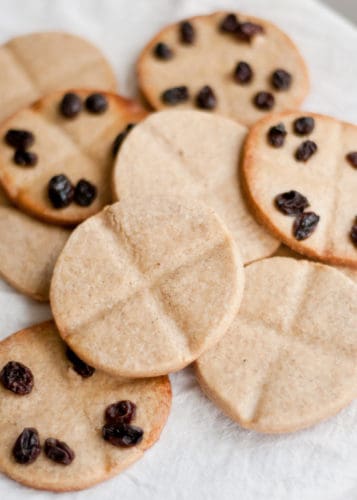
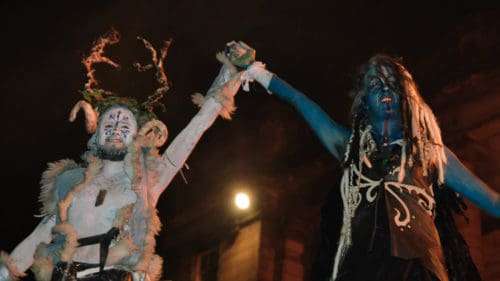
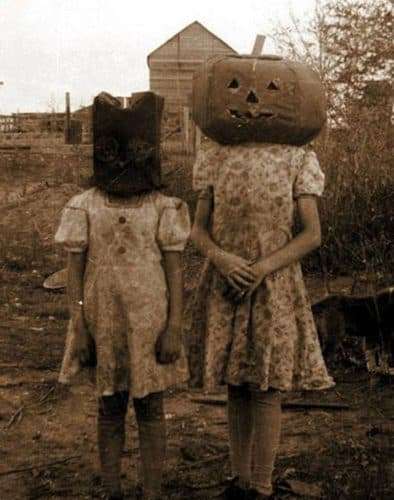
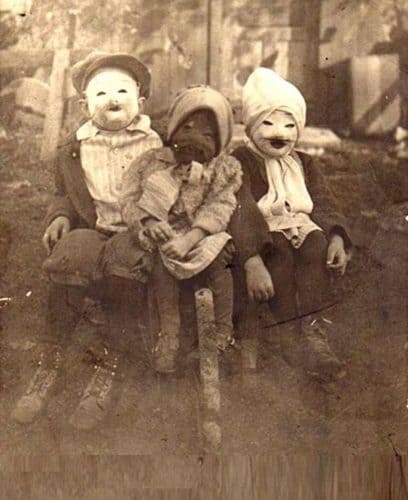
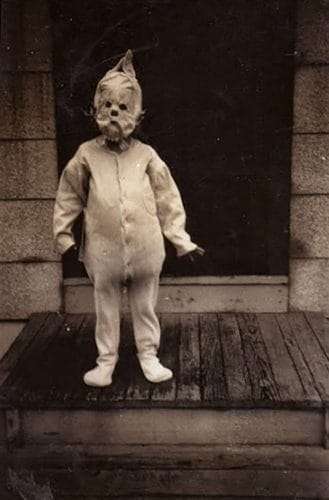
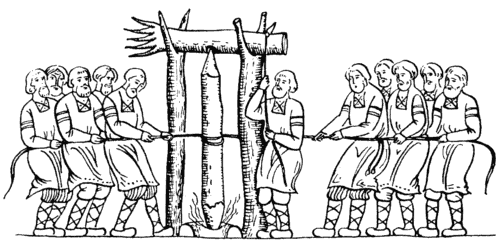
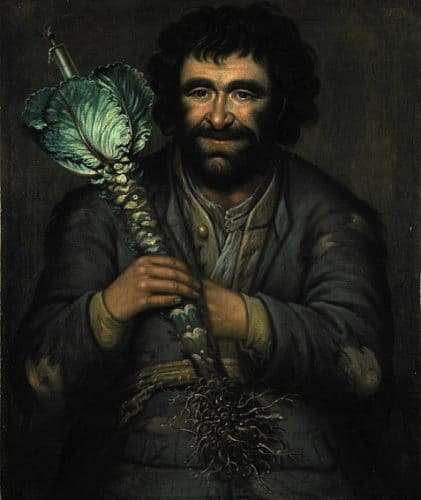
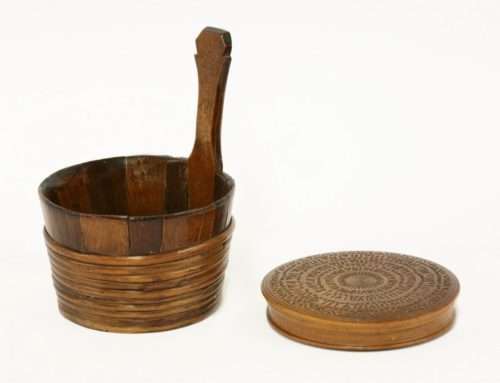
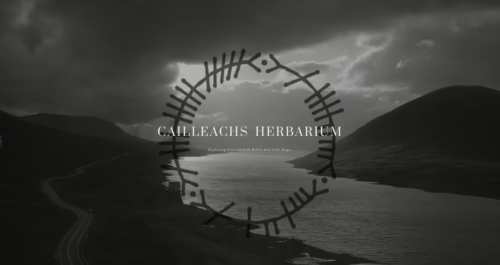
10 comments
Thank you for this rich and detailed post! So much here to read and re-read, so much to imagine, some things also to recreate.
Thanks for your lovely comments. I was worried it was a little long but this is only 10% of the research I have. I guess there just so much info around this quarter day that could be discussed :) have a great Samhuinn weekend !
Just catching up on this now after you kindly linked to our episode on Echtrae Nerae. One piece of surviving divinatory folklore in Ireland that may interest you is the barn breac – “speckled loaf”. These can be bought in any supermarket over here in the run-up to Samhain. These days, the fruity loaf only contains a ring, signifying marriage in the coming year for whomever gets it in their slice. But older versions include a stick, meaning your spouse will beat you, a pea, meaning you will be poor, and a coin, meaning you will be rich. I have eaten barn breac most of the last 40 years!
So nice that you popped by to share! The story Archeologist site is amazing and we are lucky to have the two of you working so hard on it !! I think i could have written about divination practices on Samhuinn for ever there are so so many but now i must get my hands on some barn breac or maybe you have a reliable recipe i might share :)
Stay well x
I am surprised that A. Finch’s work was ever published in THE KENYON REVIEW because Finch’s work exampled here shouts the earthy past and not close scholarship, and I love Finch’s conclusion, its common sense. . . I so love Halloween. As I have grown older and more alone or stranded from dead family and people of false promises, Halloween has become enriched, all too sacred for its real feelings, and all too quick to leave.
Its a great poem Steven, one i thought was evocative of the season and quarter day and glad you appreciate it. Halloween and Samhuinn are my favourite time of year too. I hope you had a good one.
What a great, informative post. Thank you for sharing what you found. There was a lot I hadn’t read about before – like the kale divination! Interesting!
Thanks for giving it your attention grey, and taking time out to comment.
Loved it, excellent as usual. As a person who does still spill blood of animals, hunts, grows food and forages for part of my sustenance, I think the focus on the horrors and spooky things really just always comes down to the ways in which modern humans are deeply uncomfortable with death in all ways. I love how you point out the places where historical tradition and modern re-telling and recreation part ways also <3 Another great post!
Thanks Becky :) The Martinmas post is also relevant as well i reckon :)